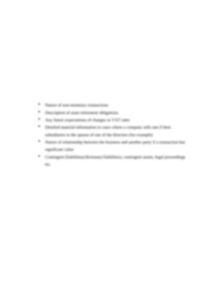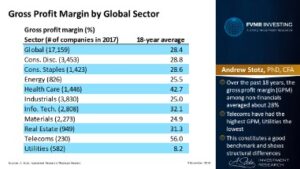What is Cost per Conversion CPC and how to calculate it?
By analyzing conversion costs, companies can gain valuable insights into their production expenses and make informed decisions regarding cost reduction strategies. To make the frames for the glasses, workers must https://simple-accounting.org/ cut the appropriate length of material and then shape the material into the frame with the help of a frame mold. At the end of every year, after the firm’s inventory count, the firm looks at production costs.
- Conversion cost is often used by operations managers to determine if there is any waste in the production process.
- Raw materials are not included in conversion costs but are included in prime costs, which are direct materials and direct labor.
- Although the prime cost is computed and given at the start of the cost sheet, there is a fixed standard that requires the computation of conversion cost until and unless the manager demands it.
The firm wants to figure out the conversion costs so they can adjust prices for next year. The frames and lenses are direct materials and are not included in conversion costs. The $200,000 paid to production workers is direct labor, which is a conversion cost. The $50,000 paid to the production manager is manufacturing overhead, which is a conversion cost. The $200,000 cost for renting the production facility is part of manufacturing overhead costs, which are conversion costs. The $20,000 cost for utilities and insurances related to production are also manufacturing overhead, which are production costs.
Therefore, the conversion cost per unit for the month was $6.80 per unit (calculated as $136,000 of total conversion costs divided by the 20,000 units produced). Manufacturing overhead costs are those manufacturing costs necessary to produce a product, excluding the direct labor costs. This includes indirect labor costs, which are labor costs incurred by a company for those employees who are not directly involved in producing the actual good.
How to Calculate Conversion Costs
We used this formula to calculate conversion costs, but it can also be used to find one of the missing variables, such as direct labor costs or manufacturing overhead costs. From this, we can set our price, fill in our balance sheet, and complete our income statements. Understanding examples of conversion costs can provide further clarity on how they are calculated and their impact on product pricing. Let’s consider an example where a company incurs $50,000 in direct labor costs and $86,000 in factory overhead costs, and it produces 20,000 units.
Conversion costs definition
This can include things such as providing more information about your product or service, sending a follow-up email, or giving a free trial. The next step in the cycle is conversion, which is when a lead takes a desired action or becomes a paying customer. Finally, it’s important to retain customers and keep them happy so they continue nonprofit job description toolkit to do business with you. Direct labor costs are the same as those used in prime cost calculations. Prime costs are reviewed by operations managers to ensure that the company is maintaining an efficient production process. The shaping department completed 7,500 units and transferred them to the testing and sorting department.
In order to make this calculation, you will have to estimate the monetary cost of effort. The easiest way to do this is to assign a fixed cost per hour of human work. Make sure that this cost is consistent with the pay rate per hour of the team who is working to achieve these conversions. This will ensure that your estimates are at least within reason.
List of Common Business Conversion Costs
Learn how to integrate sales within your overall marketing strategy. As we discussed above, minor changes can make a big difference to your marketing campaign. Remember, you don’t have to check only the performing ones. And you don’t have to pay all your attention to the ones with a low conversion rate. Not all your landing pages will have the same conversion rate. In this article, we talk about helpful landing page techniques.
Conversion costs may also be used to build market-based pricing models for items and to estimate the final worth of finished goods. Enzo Avigo, former product manager at Intercom and CEO of product analytics startup June, unpacks how to accelerate your path to product market fit. Calculate the conversion of Company A using the costs shown above. It excludes the salary of management, office staff, and other people who are not working directly with the products. It is rudimentary to gauge the value of closing inventory since it is a line item reported on both the income statement and the company’s balance sheet.
How do You Calculate Prime Cost?
The equivalent unit computation determines the number of units if each is manufactured in its entirety before manufacturing the next unit. For example, forty units that are 25% complete would be ten (40 × 25%) units that are totally complete. Direct labor costs may seem to be pretty straightforward; however, these costs don’t just include wages. You want to tally all of the costs that must be paid for the labor needed to actually manufacture a product.
What is cost per conversion?
From the investor’s perspective, bonds are safer, but they have a limited return. Equity provides an opportunity for share price appreciation, but no protection in case of company default. Convertible bonds, preferreds and debentures provide a hybrid option for companies and investors. Measuring cost per conversion is essential for several reasons.
As a result, businesses need to be proactive in making changes at the right time. Operations managers use conversion costs to help identify waste within the manufacturing process. Prime costs plus conversion costs does not equal manufacturing cost. Some costs, notably labor, are included in each, so adding them together would overstate manufacturing cost. Cost per conversion is crucial in calculating marketing campaigns’ efficiency and effectiveness, planning and forecasting, and identifying improvement opportunities.
The value of ending inventory that appears in the balance sheet of the preceding year is carried forward as the beginning inventory for the current year. Finally, don’t forget to come back to this article to clear any doubts about the conversion cost. And remember to try out our tips to reduce the cost per conversion. As time passes, there will be more ways to gauge your campaign’s performance.
The prime cost’s major goal is to set the price of a product with the intended profits. The conversion cost, on the other hand, is estimated to total and resolve any production inefficiency. Although the prime cost is computed and given at the start of the cost sheet, there is a fixed standard that requires the computation of conversion cost until and unless the manager demands it. The pay, wages, or perks provided to an employee who works on the completion of all final items are considered direct labor costs. Prime costs are frequently calculated using compensation provided to machinists, painters, or welders. Prime costs, unlike conversion costs, do not contain any indirect costs.


.jpeg)
.jpeg)








